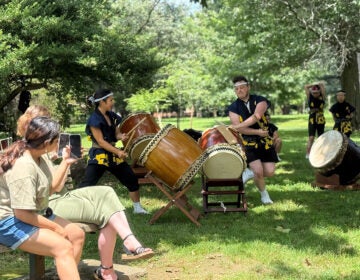Philadelphia enlists homeowners to help spruce up the city
It takes about $435 to plant a tree along the sidewalk–that accounts for the truck, a guy with a shovel, and the tree itself. But give a homeowner a tree and ask her nicely if she would plant it in her back yard–that costs about 35 bucks.
Philadelphia has a lofty goal to plant 300,000 trees inside the city limits. The city has neither the money nor resources to plant all those trees on its own, so representatives have been asking area businesses to volunteer resources and labor.
Now the city is reaching out to individual homeowners.
“There’s a limit to what institutions can plant on their own limited acreage,” said Mike DiBeradinis, the deputy mayor for the environment and community resources. “What this does is, every back yard in the city potentially becomes part of the tree count, and every citizen could become part of restoring the tree cover. It has a very broad base of stewardship.”
Appealing to thousands of individual homeowners is not as efficient as working with a few large businesses, so DiBeradinis is getting help launching this program from a large business. The University of Pennsylvania is asking its employees–many of whom own homes in Philadelphia–to take a tree for their back yard.
“The whole action of receiving a tree, planting for it, learning how to care for it, and watching it grow over time is a way of engaging the community in environmental stewardship,” said Anne Papageorge, Penn’s vice president of facilities. “I remember receiving a tree in the fifth grade on the first Earth Day. It’s something I still remember today.”
Penn has 300 trees to give away. Each comes with a care and maintenance manual. Papageorge says the program is part of the university’s Climate Action Plan, which includes energy conservation, alternative transportation, efficient building design, education and recycling.
The city’s Department of Parks and Recreation is also beginning a program to address the city’s dying tree stock. Between now and the winter, the city expects to trim or remove about 1,700 damaged trees.
WHYY is your source for fact-based, in-depth journalism and information. As a nonprofit organization, we rely on financial support from readers like you. Please give today.




